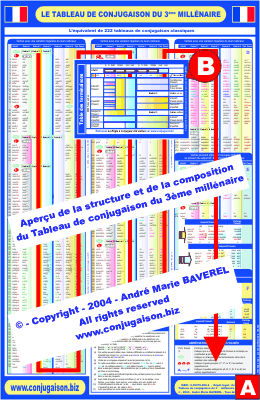
Don’t worry, it gets better when you memorize this verb fully. Aller (to go) The fourth French verb on our list is, unfortunately, another irregular verb. See also: All About The French verb Faire.
There are many similarities between English verbs and French verbs, but, if you’re like most native speakers, you don’t usually consider what tense a verb is in, whether it has an irregular conjugation, if it is reflexive, in its infinitive form, etc. Each of these verb categories has specific rules governing how they change to express layers of crucial information about the situation. In compound tenses, ne precedes the conjugated helping verb and any object pronouns, and the second part of the negative follows the conjugated helping verb (except for personne, nulle part, and aucun always used in the singular, which follow the past participle when they are used as objects):All French verbs end in either -er, -re, or -ir. Here’s the conjugation of.
Infinitive verbs in English always mean to ( do some action ). (An infinite number of ways, so to speak.) Infinitive verbs in French will always end with -ER, -IR, or -RE. They are in their most basic form, and can be adapted in many different ways.
All French Verb Tenses Chart Download A PDF
Across the The goal is to get you to the same level of fluency with your second (or third, etc.) language, where you avoid existential moments (Am I speaking? Who am I speaking to? Is it reciprocal? Did this action have a specific ending point in the past? Would it be considered habitual?) and simply speak French without a second thought.Acces PDF French Verbs List French Verb Conjugation Chart - cf.ltkcdn.net se diriger vers - to move toward/make/head for. Find the verb listed that you are looking for (listed alphabetically). Click the image below to download a PDF document featuring charts that give conjugations for the most commonly used verbs in French. Printable Charts for Commonly Used Verbs.

All French Verb Tenses Chart How To Use The
How French Verbs ChangeThe form of a verb changes to show who perpetrated the action (the person) and when it occurred (the tense). So, while memorizing vocabulary is an extremely important exercise when learning a language, if you’re not aware of how to use the verbs you learn appropriately, you’ll be extremely limited in what you’re able to say. All that changed was one little constituent – the verb (from conditional tense to past tense, if you’re curious). For example, the difference between “I would like to eat some cake” and “I ate some cake” is striking.
Most verbs only change in the third person singular (see below) in English, but all verbs change to distinguish when something occurs. French personal pronouns je = I nous = we tu = you vous = you all / you guys il/elle/on = he (masc.) / she (fem.) / we (informal) ils/elles = they (masc.) / they (fem.)Though native speakers may not notice it, English verbs also change depending on who performs the action and when it occurs. Some examples of mood in French are indicative, imperative (used to give commands), conditional (used to express possibility), and subjunctive (used to talk about opinions and desires).French uses one extra category of person ( vous) that corresponds to addressing “you all / you guys” in English. Rather than helping you express when something happened, mood allows a speaker to express their attitude toward a subject.
You can spot them easily in French because they retain their original ending of -er, -ir, or -re. Never Change! Finite Verbs That Stay the Same InfinitifsThe infinitive form of a verb is its most basic form. Generally, irregular verbs are some of the most common verbs in the language because historically their forms have fossilized, rather than evolving to match new patterns in the language (since they’re just used so much!).Being exposed to verbs in context (rather than just in a chart) is also crucial to becoming comfortable using them – not to mention it’s more fun! Use Lingvist’s French course to see verbs in context as well as look over grammar tips to clarify concepts explicitly as needed. Like you, they probably never realized that French verbs change their forms until this unfortunate surprise!Both English and French have a lot of irregular verbs which simply need to be memorized, but learning the rule for regular verbs makes conjugation much easier. For this reason, native French-speaking children devote hours in primary school to learning conjugation charts to be able to properly spell the many forms of verbs. Whereas English verbs don’t change much in either spoken or written form, French verbs are often pronounced the same but change drastically in written form.

Conjugated to reflect person/tense) verb, they don’t need to change their form. As participles are combined with another inflected (a.k.a. This is in contrast to the imparfait (imperfect), which is used for habitual actions or actions that have a fuzzier end point. The passé composé (literally “composite past,” but technically perfect tense) is a form of the past tense used for an action that had a specific ending point.

French grammar can certainly seem overwhelming, but knowing the English equivalents can help you navigate the stormy sea of verbs. ÊtrePresent tense: être (to be) je suis nous sommes tu es vous êtes il/elle/on est ils/elles sontPresent tense: avoir (to have) j’ai nous avons tu as vous avez il/elle/on a ils/elles ontHopefully the comparison of these concepts in English and French will help you get started with changing verbs to fit your intended meaning. Though they don’t express exactly the same meaning, the use of the auxiliary “have” and the past participle “given” are very similar to as donné.


 0 kommentar(er)
0 kommentar(er)
